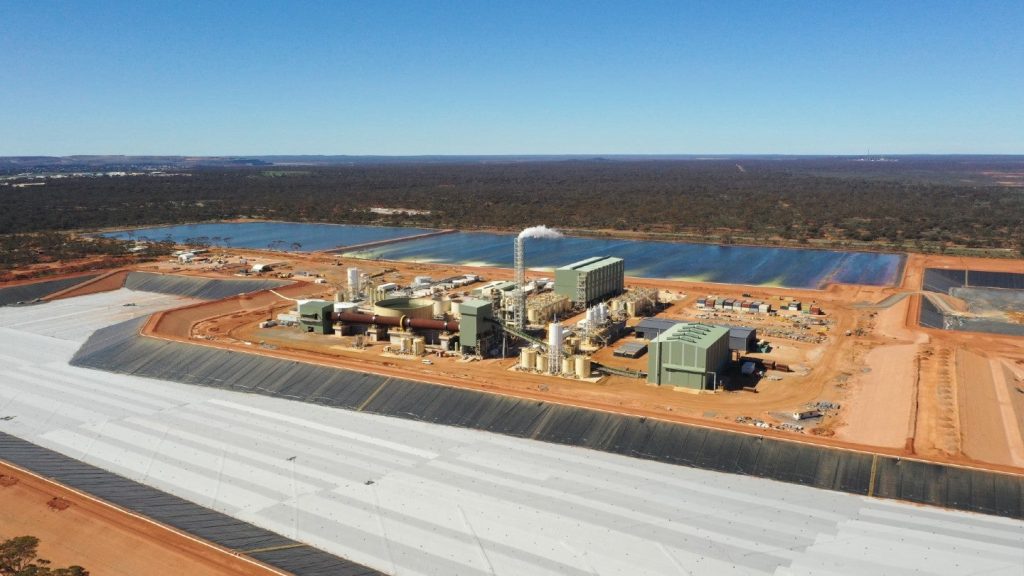Australia’s Western Australia Positions to Challenge China in Rare Earth Market
Western Australia is intensifying efforts to become a significant global player in rare earth elements (REEs) supply, challenging China’s dominance in a market crucial for green technology and defense applications.
A consortium of industry and academic stakeholders recently received an A$175,000 ($113,000) grant to research the extraction and processing of REEs, funded by the Minerals Research Institute o
...
Australia’s Western Australia Positions to Challenge China in Rare Earth Market
Western Australia is intensifying efforts to become a significant global player in rare earth elements (REEs) supply, challenging China’s dominance in a market crucial for green technology and defense applications.
A consortium of industry and academic stakeholders recently received an A$175,000 ($113,000) grant to research the extraction and processing of REEs, funded by the Minerals Research Institute of Western Australia (MRIWA). The initiative aims to unlock high-value critical rare earth resources and establish advanced processing capabilities within the region.
“Western Australia’s leadership in minerals research gives this state a unique opportunity to play a key role in decarbonising the critical minerals supply chain,” said Western Australia’s Minister for Mines and Petroleum, David Michael, highlighting the strategic importance of the project.
The research will be conducted by Curtin University’s Resources Technology and Critical Minerals Trailblazer, alongside industry partners Narryer Metals, Dreadnought Resources, Terrain Minerals and Pluto Resources, with resource development consultancy RSC leading the project.
Associate Professor Laurence Dyer from Curtin University explained that the research focuses on low-grade, clay-hosted rare earths that present unique extraction challenges. “The current work aims to build on the characterisation of these deposits – completed in phase one – to work towards developing an economic method of extracting the rare earths,” he said.
The timing is particularly significant as geopolitical tensions have intensified competition in the rare earths sector. In April, China announced export bans on several REEs, prompting industries worldwide to seek alternative suppliers. Australia, with its stable regulatory environment and significant resources, sees an opportunity to position itself as a reliable alternative.
Western Australia already hosts substantial rare earth operations. Lynas Rare Earths, the largest producer of neodymium and praseodymium outside China, recently began dysprosium oxide production at its Malaysian facility, which processes materials from its Mount Weld mine in Western Australia.
“This is a significant step for supply chain resilience,” said Amanda Lacaze, Lynas CEO and managing director, emphasizing the importance of developing non-Chinese supply sources.
According to Dyer, Western Australia’s strength in the rare earths sector is built on three pillars: Lynas’ operational processing facility, the Iluka Eneabba refinery (expected to be operational by 2027), and the recent discovery of numerous low-grade, high-tonnage rare earth deposits across the state—with at least 60 identified in the past two years alone.
The MRIWA-funded project initially focuses on the mineral-rich Yilgarn region of Western Australia. Researchers will study how rare earths appear in deposits and develop appropriate processing techniques to maximize extraction efficiency while maintaining environmental sustainability.
“This is not something that will happen overnight, but building a process from the bottom up to apply to these materials has the potential to unlock massive resources,” Dyer explained. The techniques being developed will be applicable across multiple deposits to maximize potential impact.
Despite promising prospects, significant challenges remain. Western Australia’s high operational costs present obstacles to downstream processing, particularly in the initial phases. Additionally, developing new extraction technologies involves substantial risk, with previous projects in the sector often exceeding time and budget constraints.
Environmental considerations are also paramount. One key difficulty in harvesting materials from non-ionic clay is that significant amounts of material must be mined in an environmentally responsible way. The project will assess organic acid extraction techniques to optimize rare earth recovery while ensuring sustainable waste management.
“As rare earths are key in modern technologies, and in particular energy generation, harsh environmental impacts from producing the elements is a self-defeating enterprise,” Dyer cautioned.
The research project, scheduled to run through 2026, forms part of Western Australia’s broader strategy to become a global leader in rare earth supply. With increasing international demand for secure, environmentally responsible sources of these critical minerals, Western Australia sees an opportunity to capitalize on its “stable, transparent operating environment” while developing supply chains that reduce China’s market dominance.
As countries worldwide seek to secure their technological future, Western Australia’s investments in rare earth research and processing capability could position the region as a crucial hub in the global critical minerals landscape.


